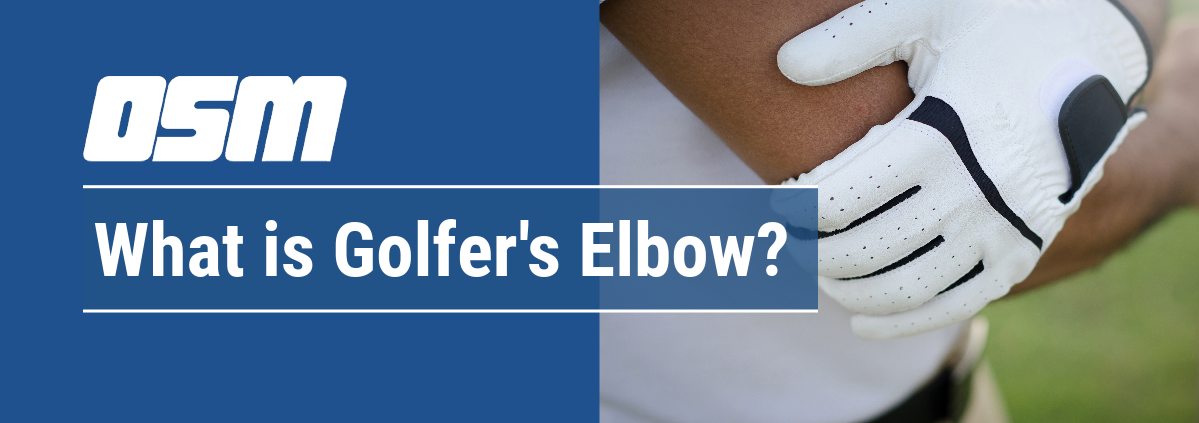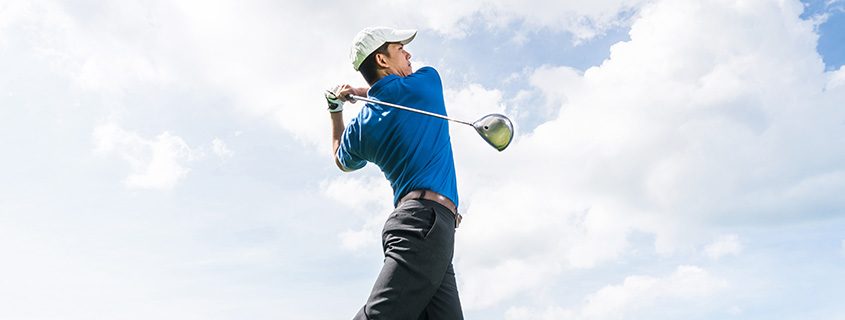Golfers and Baseball Elbow: What is it?
Article featured on UW Medicine
What is medial epicondylitis?
Medial epicondylitis is also known as golfer elbow, baseball elbow, suitcase elbow, or forehand tennis elbow. It causes pain from the elbow to the wrist on the inside (medial side) of the elbow. The pain is caused by damage to the tendons that bend the wrist toward the palm. A tendon is a tough cord of tissue that connects muscles to bones.
What causes medial epicondylitis?
Medial epicondylitis is caused when too much force is used to bend the wrist toward the palm. This can happen when swinging a golf club or pitching a baseball. Other possible causes of the condition include:
- Serving with great force in tennis or using a spin serve
- Weak shoulder and wrist muscles
- Using a tennis racket that is too tightly strung or too short
- Throwing a javelin
- Carrying a heavy suitcase
- Chopping wood with an ax
- Using a chain saw
- Frequent use of other hand tools on a continuous basis
What are the symptoms of medial epicondylitis?
The most common symptom of medial epicondylitis is pain along the palm side of the forearm, from the elbow to the wrist, on the same side as the little finger. The pain can be felt when bending the wrist toward the palm against resistance or when squeezing a rubber ball.
The symptoms of medial epicondylitis may look like other health problems or conditions. Always see your healthcare provider for a diagnosis.
How is medial epicondylitis diagnosed?
The diagnosis of medial epicondylitis often can be made based on a physical exam. Your healthcare provider may rest your arm on a table, palm side up, and ask you to raise your hand by bending your wrist against resistance. If you have the condition, pain often is felt in the inner aspect of the elbow.
How is medial epicondylitis treated?
Treatment for medial epicondylitis includes stopping the activity that produces the symptoms. It is important to stop doing the movement that caused the condition in the first place. Treatment may include:
- Ice packs to reduce inflammation
- Activity modification
- Strengthening exercises
- Anti-inflammatory medicine
- Bracing
- Physical therapy
- Surgery (rare)
What can I do to prevent medial epicondylitis?
Being aware of your daily movements can help prevent this condition. Some suggestions include:
- Using correct form when doing repetitive activities, such as work or sports movements
- Keeping shoulders, forearms, and wrist muscles strong
- Gently stretching forearm muscles before and after repetitive tasks
- Using correct body mechanics when lifting or moving objects
Key points about medial epicondylitis
- Medial epicondylitis causes pain from the elbow to the wrist on the inside (medial side) of the elbow.
- It’s more common in people who play golf or pitch baseball.
- Treatment includes stopping the activity that caused the pain.
- Using the correct form when doing repetitive activities can help prevent the condition.
Next steps
Tips to help you get the most from a visit to your healthcare provider:
- Know the reason for your visit and what you want to happen.
- Before your visit, write down questions you want answered.
- Bring someone with you to help you ask questions and remember what your provider tells you.
- At the visit, write down the name of a new diagnosis, and any new medicines, treatments, or tests. Also write down any new directions your provider gives you.
- Know why a new medicine or treatment is prescribed, and how it will help you. Also know what the side effects are.
- Ask if your condition can be treated in other ways.
- Know why a test or procedure is recommended and what the results could mean.
- Know what to expect if you do not take the medicine or have the test or procedure.
- If you have a follow-up appointment, write down the date, time, and purpose for that visit.
- Know how you can contact your healthcare provider if you have questions.
The Orthopedic & Sports Medicine Center of Oregon is an award-winning, board-certified orthopedic group located in downtown Portland Oregon. We utilize both surgical and nonsurgical means to treat musculoskeletal trauma, spine diseases, foot and ankle conditions, sports injuries, degenerative diseases, infections, tumors and congenital disorders.
Our mission is to return our patients back to pain-free mobility and full strength as quickly and painlessly as possible using both surgical and non-surgical orthopedic procedures.
Our expert physicians provide leading-edge, comprehensive care in the diagnosis and treatment of orthopedic conditions, including total joint replacement and sports medicine. We apply the latest state-of-the-art techniques in order to return our patients to their active lifestyle.
If you’re looking for compassionate, expert orthopedic and podiatric surgeons in Portland Oregon, contact OSM today.
Phone:
503-224-8399
Address
17355 Lower Boones Ferry Rd Suite 100A
Lake Oswego, OR 97035
Hours
Monday–Friday
8:00am – 4:30pm




